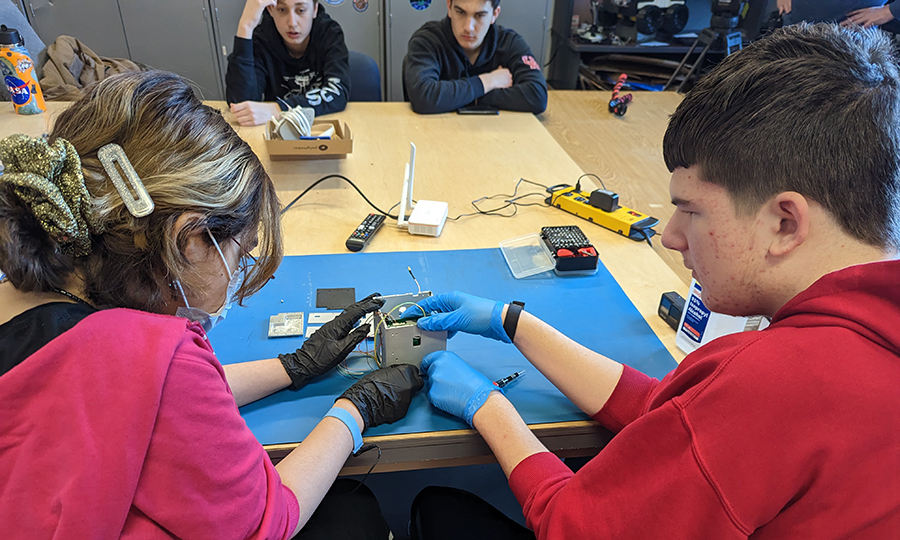Calendar Icon
Feb 22, 2024
Person Bust Icon
By Karl Vogel
![]() RSS
Submit a Story
RSS
Submit a Story

LAUNCH SCHEDULED FOR THURSDAY, MARCH 21 AT 3:35 P.M: CLICK HERE
Three-plus years of work creating a tiny satellite for a research mission in outer space are over.
Now, the college, high school and middle school students on the Big Red Satellite (BRS) Team enter the next, and perhaps most difficult, phase of the mission – the countdown to launch.
“It’s in NASA’s hands now,” said Karen Stelling, professor of practice in mechanical and materials engineering and faculty advisor to the team.
“They said it could be three months from the date we integrated our satellite into the deployer to when the rocket launches, and then three more months at the ISS before the astronauts on the space station deploy it into space. All we can do is wait.”
In 2021, the team comprised of youth from Lincoln, Omaha and Aurora and the University of Nebraska–Lincoln’s Aerospace eXperimental Payload (AXP) team was chosen by NASA to research, design and build a CubeSat satellite that would be included as an auxiliary payload for a future mission into space.

CubeSat satellites are required to meet specific size parameters: measuring about four inches on each side, weighing less than three pounds and having an approximate volume of about a quart (the size of a cubed box of facial tissues).
The BRS satellite will test perovskite solar cells - an emerging technology - for its light weight, efficiency, ability to generate power both with and without direct sunlight and its potential lifespan in space.
BRS has relied on key partners to get to this point, Stelling said. They include the National Renewable Energy Lab, which provided the perovskite solar cells; the University of Oklahoma for verification of system accuracy and performance; Rhodes College for sharing concepts and contacts; and Nanoracks, which has guided the team to meet the requirements for launch.
Nanoracks, a private company that works with NASA and facilitates experiments and launches of CubeSats, will control a camera on the ISS’s space arm during the CubeSat deployment from the ISS and will provide livestreamed video and still pictures for the Big Red Satellite Team.
About four hours after the satellite is deployed, Stelling said, the Nebraska team should know if the mission will likely succeed.
“We’re hoping it functions and that we can get data on performance and decay that we can analyze, and that will complement a ground-based project,” Stelling said.
Supported by a NASA Nebraska Space grant, Ned Ianno, professor of electrical and computer engineering, is working with students in his lab to test perovskite solar cells by mimicking space conditions with regard to VUV and atomic oxygen with the goal of publishing a scientific paper on the results. These results may also inform interpretation of results of the perovskite cells on the CubeSat.
The satellite is now scheduled to be aboard a SpaceX Falcon 9 rocket that will lift off from Florida on or about March 12, Stelling said.
The team is planning to about 40 people – faculty, students and parents included - to the Space Coast for four days during the university’s spring break. The group hopes to tour Kennedy Space Center and be close enough to witness its satellite launched into space.
“At this point, everything’s completed that we can do on this,” Stelling said. “It will be so exciting to see our project move along to the next phase, but it’s not over. There’s still so much more work to be done.”
Submit a Story
